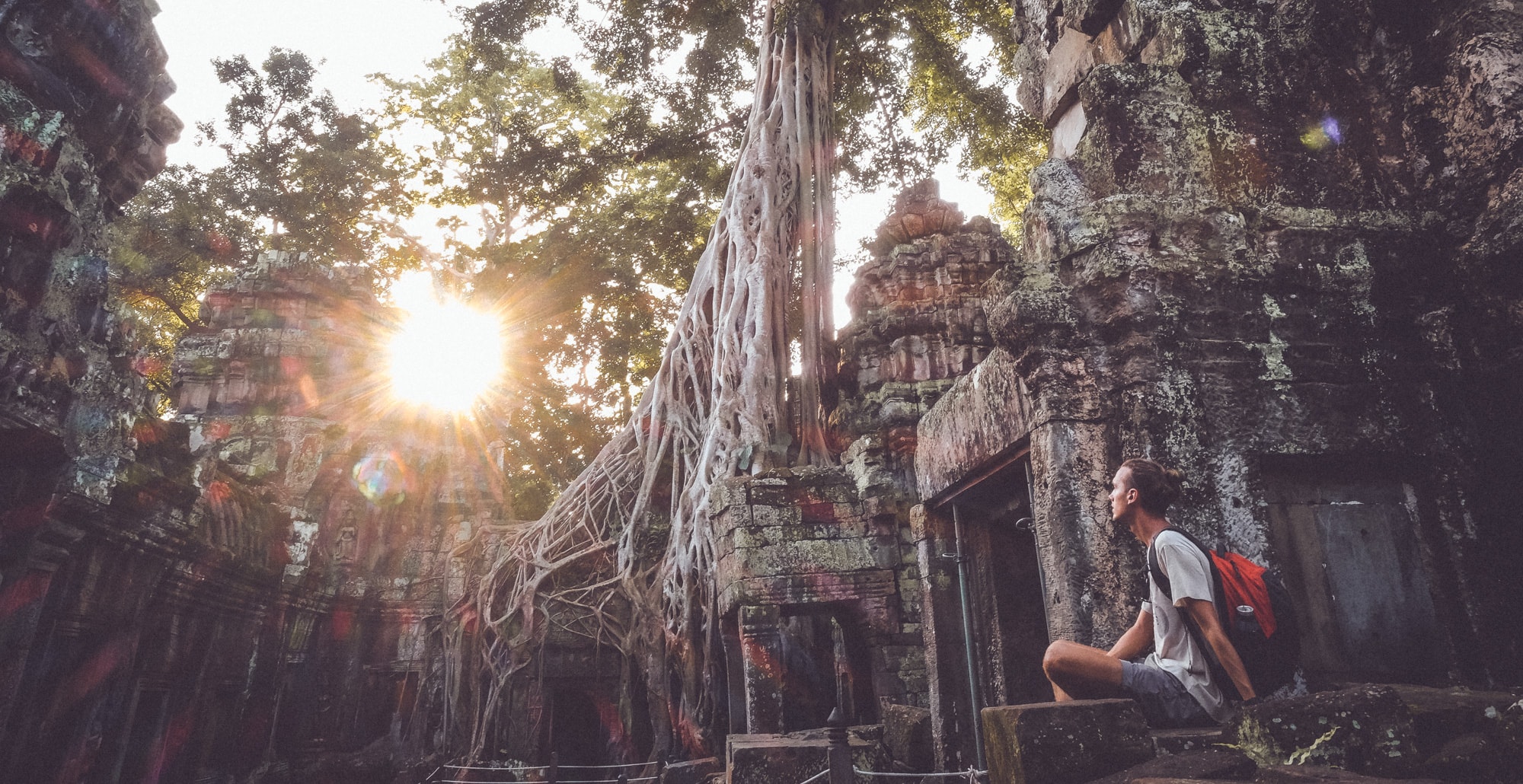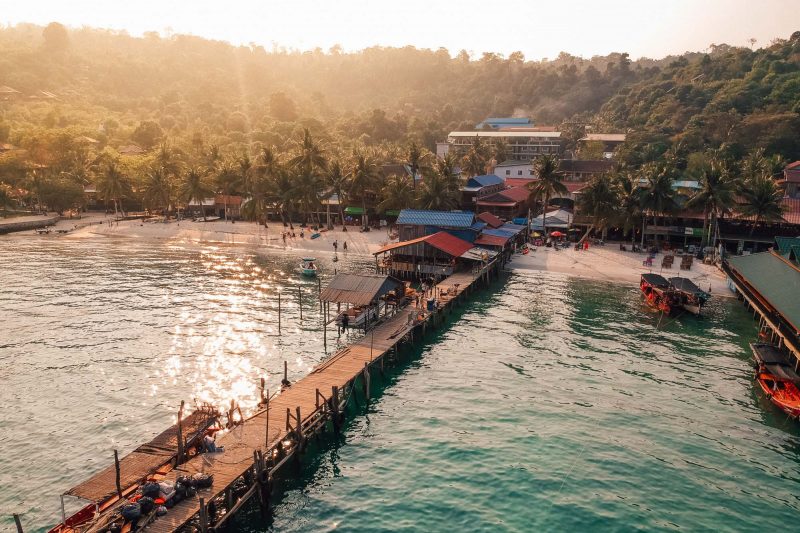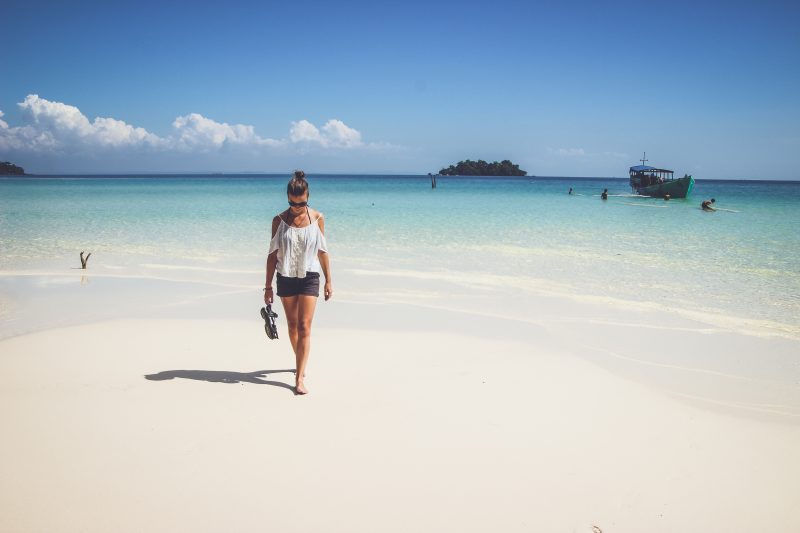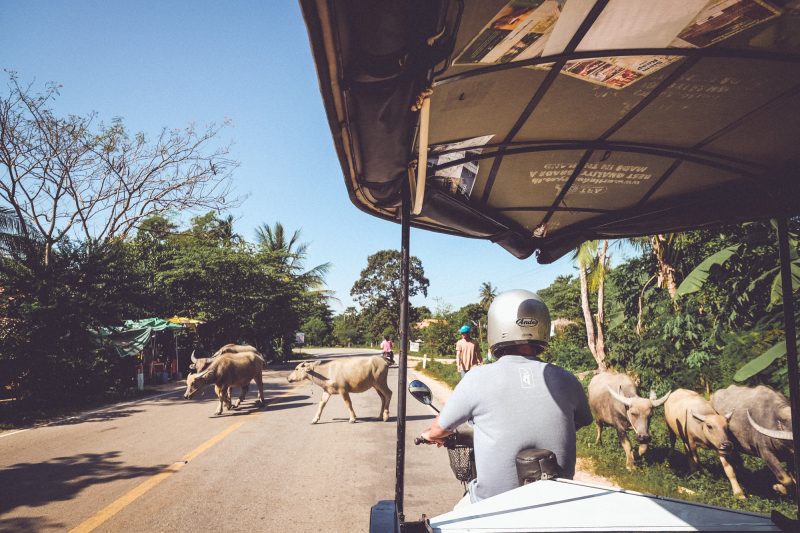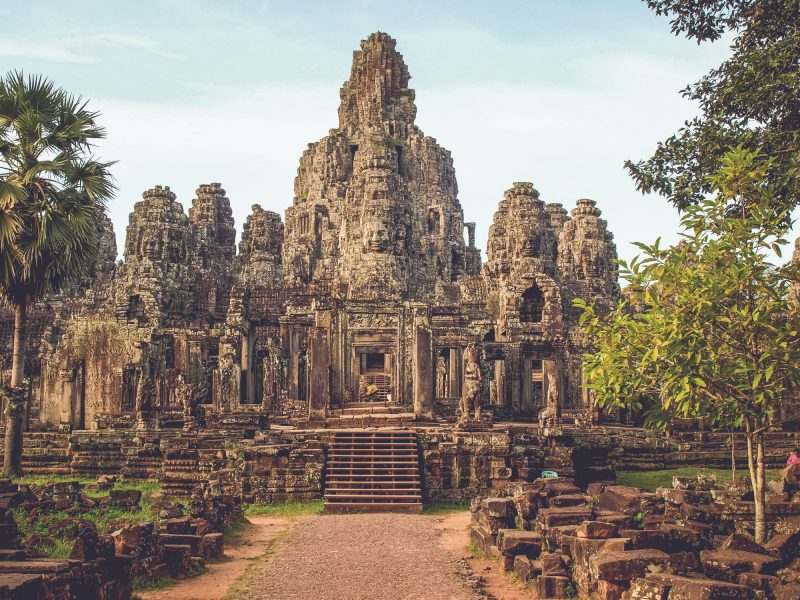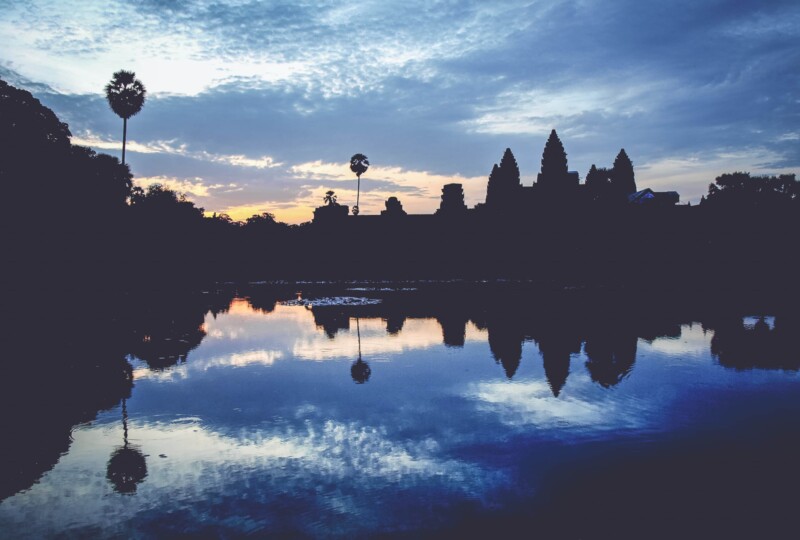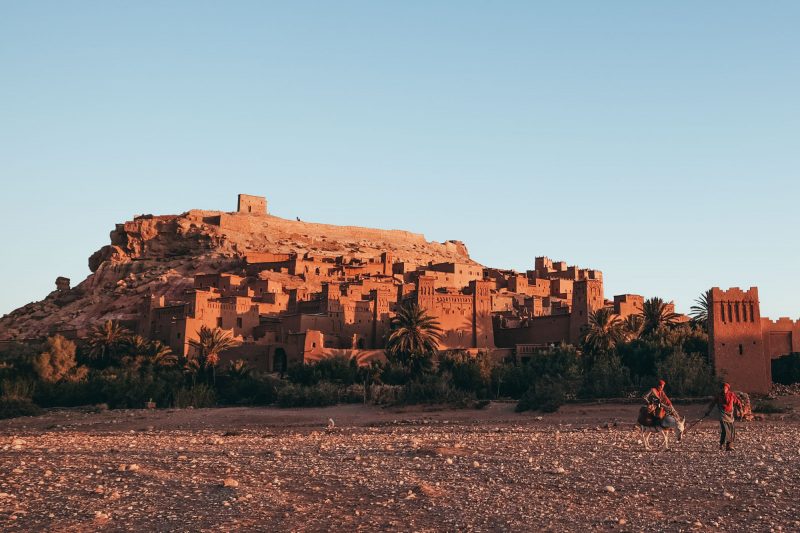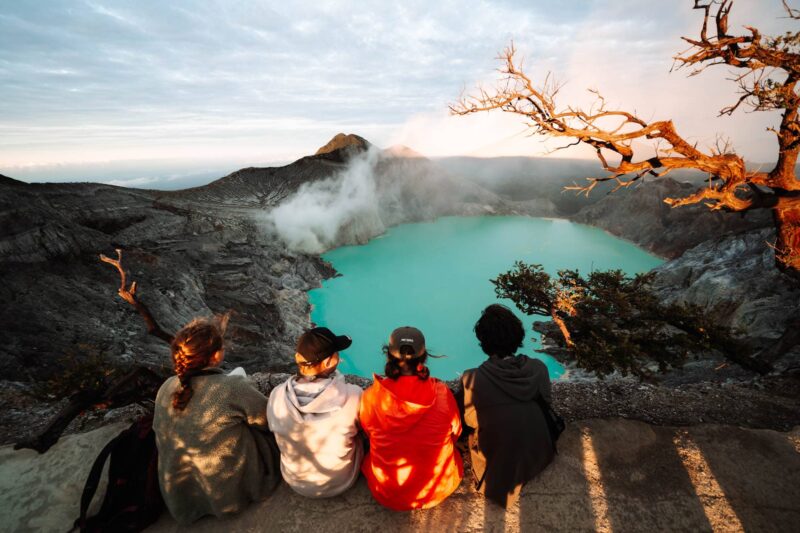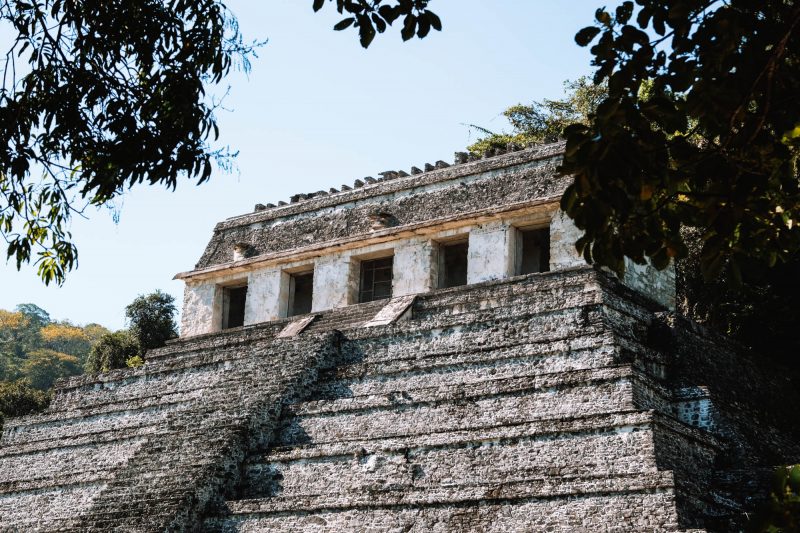Visiting Angkor Wat is definitely one of the highlights of your trip through Cambodia. Before you visit Angkor Wat, it’s wise to prepare yourself well so that you can make the most of it. We’ve visited Angkor Wat twice and are here to share our best tips with you, from information about the costs to which temples are the most beautiful and how you can have some temples all to yourself.
Let’s start by correcting the most common mistake: many people use the term ‘Angkor Wat’ to refer to the entire area when it’s just one of the dozens of temples in the Angkor area. So, why do we only mention Angkor Wat in the title and introduction of this article? Because everyone searches for ‘Angkor Wat’ on Google, and we want you to be able to find our article. To avoid further confusion, from now on, we will only write about the Angkor temples unless we are specifically talking about Angkor Wat.


A Brief History of Angkor
Angkor Wat is the largest religious monument in the world and, as a result, one of the most impressive. Especially when you consider that it was built hundreds of years ago. Construction began in the year 889, and over the next 500 years, they built an entire city, including many temples. At the peak of the Khmer Empire, Angkor was home to one million people, while London at that time was just a village with tens of thousands of residents. Angkor Wat, the most famous, largest, and most important temple in Angkor, was built in just 32 years by about 50,000 people. Today, only the temples of this gigantic city remain because only the temples were made of stone, while all other buildings were made of wood.
Angkor was the capital of the Khmer Empire, dominating a large part of Southeast Asia from 800 to 1432. After a series of conquests by the Ayutthaya Kingdom (modern-day Thailand) in the 15th century, the king of the Khmer Empire decided to abandon Angkor and move to the new capital, Phnom Penh. This led to Angkor being abandoned, and nature took over.
It wasn’t until around 1900, when almost the entire city had become a vast jungle, that Angkor was rediscovered by a Frenchman. During the French occupation between 1863 and 1949, efforts were made to clear the city of the jungle and begin the restoration of the temples. However, when the Khmer Rouge came to power, these activities were halted. Since 1990, the temples of Angkor have been Cambodia’s flagship attraction, drawing 2.5 million tourists annually, compared to only 7,500 tourists in 1993.


Costs of Visiting Angkor: Tickets and Tuk-Tuks
The cost of visiting Angkor varies greatly from person to person. It depends on which temples you want to visit, how many people you share a tuk-tuk with, and how many days you plan to spend there. The tuk-tuk price is determined by the route. If you want to see only the main temples in about 6 hours with 2 people, it will cost you a total of $47 per person. The entrance ticket for 1 day is $37, and for 3 days, it’s $62. We found 1 day sufficient to see the most beautiful places because after a while, they all start to look a bit similar. However, many people prefer to take it easy and spend 3 days exploring.
For the 6-hour small tour, you’ll pay about $13 for a tuk-tuk. For 8 hours, it’s $16, and for 12 hours, it’s $25. If you want to see the sunrise, there’s often an additional $5 on top of that amount. A tuk-tuk can accommodate a maximum of 4 people. If you want to adjust the tour’s itinerary, you may need to pay a little extra. In every hotel or hostel, you’ll find a booklet that shows exactly which temples are included in each tour. You can also rent a bike or scooter to save money, but it can be quite exhausting to visit the temples in high temperatures, so a tuk-tuk is quite comfortable. If you’d like to have a guide, it will cost you around $15 per day.



The 5 Most Beautiful Temples of Angkor
The entire Angkor area covers about 400 square kilometers (1544 square miles) and is scattered with large and small temple ruins. To quickly get an idea of which temples are the most beautiful, here’s an overview of the most popular ones. You could theoretically visit all of them in one day.
Angkor Wat
This is the largest, most famous, and most important temple of them all. In front of the temple, there’s a pond where you can see a stunning reflection of the temple during sunrise. This is also the most photographed temple in Angkor, and it gets crowded with tourists during sunrise. Angkor Wat is very large but not necessarily the most interesting temple to explore inside because it’s very symmetrical and well-restored. To climb all the way to the top, be prepared to wait in line for about 1 hour.
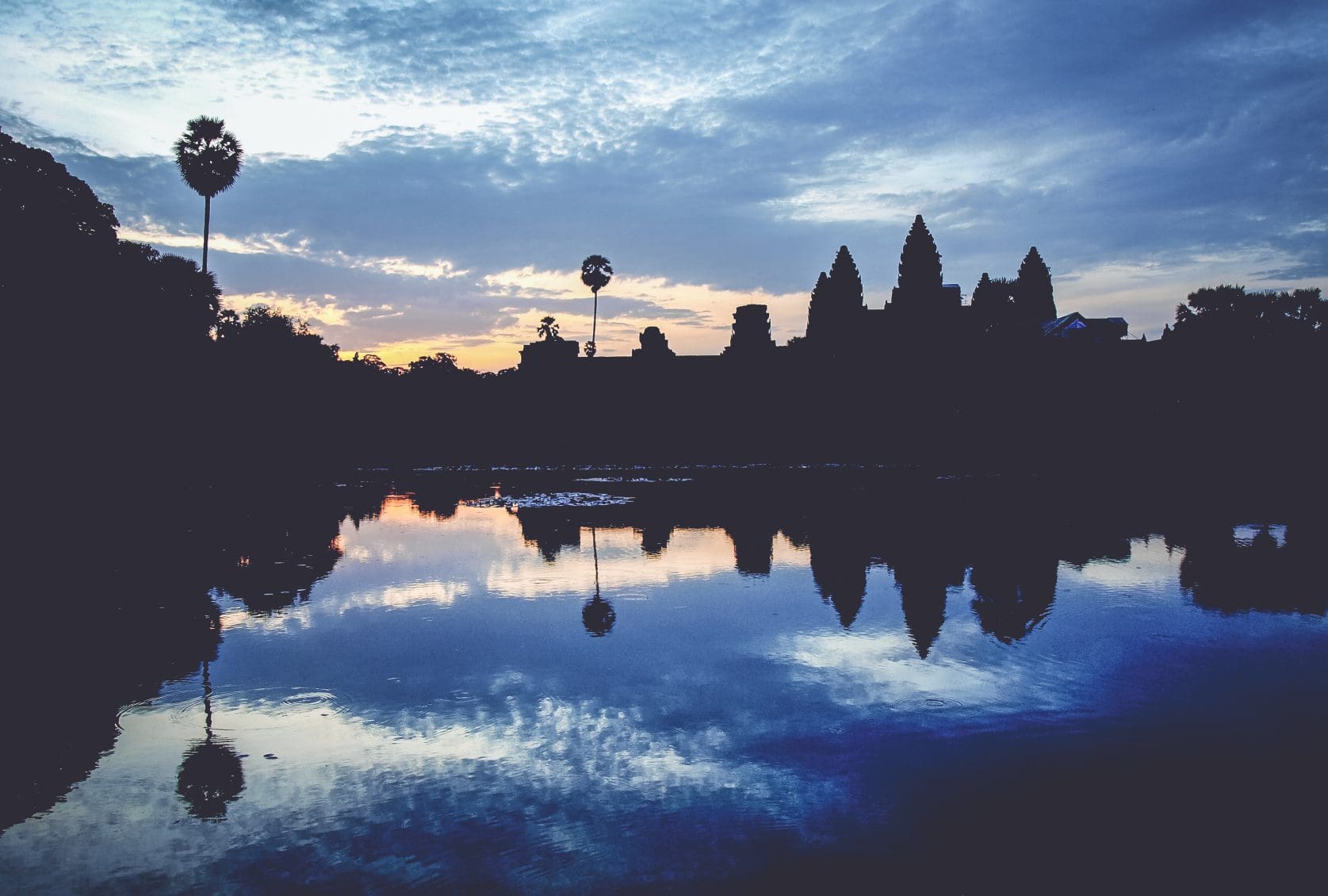
Bayon
A unique temple with 54 towers, each containing 4 faces. That adds up to 216 faces in total! The temple is incredibly beautiful, and you’ll feel like you’ve stepped into the Jungle Book. Bayon definitely belongs in the top 3 of the most beautiful temples in Angkor.

Ta Prohm
This temple is world-famous because parts of the movie Tomb Raider were filmed here. The temple is literally taken over by the jungle, with massive Ceiba Pentandra trees growing over it, creating unique scenes.

Ta Keo
This temple was never fully completed, and the fun part is that you can climb to the top using the steep stairs. It’s usually not very crowded here, and since it’s located right next to Bayon, it’s an ideal stop.
Banteay Srei
Banteay Srei means the ‘Temple of Women’ and earned its name because the intricate carvings are believed to have been crafted by women. Banteay Srei also has a beautiful reddish hue that makes it stand out. The temple is a bit farther from the main Angkor area, so you’ll need to pay extra for your tuk-tuk ride to get there.

How to Avoid Crowds in Angkor
With around 2.5 million visitors per year, Angkor can get quite crowded at times, which can diminish the overall experience. Fortunately, we’ve found a simple yet brilliant solution for that. We visited Angkor for the second time and decided to completely change the standard 6-hour small day tour to see if we could have a more unique experience. It worked perfectly, allowing us to have Ta Prohm all to ourselves, which was truly magical and the highlight of Angkor for us! How did we do it? Below is the route we took. We won’t mention specific times since the sunrise time varies each month.

Start your day like everyone else by watching the sunrise at Angkor Wat. Take some beautiful photos of the sunrise but don’t linger too long; instead, head back to your tuk-tuk driver. After sunrise, the masses will start exploring the interior of Angkor Wat, making it the perfect time to do something completely different. We went straight to Ta Prohm, even though it officially opens at 7:30, and we arrived an hour earlier, there was no security around, and we could simply walk in. If there is someone there, you may have to wait until 7:30, but you’ll likely be with only a small group of people. Having this place to yourself is a unique experience since it’s usually impossible to take a photo without 20 other tourists in the frame.

After exploring Ta Prohm, we headed to Bayon. It was a bit busier here, but still very manageable. However, when we passed by later, we saw buses full of Chinese tourists, and it seemed like a crowded amusement park on a weekend. Finally, we visited Angkor Wat, where it’s always crowded. In this case, we visited 3 temples, but if you want to visit more, you can certainly arrange that with your tuk-tuk driver.
Tips for Visiting the Angkor Temples
Dress Code
Angkor is a temple complex, and there are dress code regulations in place. For men, this matters less than for women. Women are expected to wear pants that cover their knees and have their shoulders covered. Nowadays, they are not very strict about this at the entrance because there are simply too many people visiting the temples, but out of respect, we still recommend adhering to these guidelines. Additionally, wearing a hat can be quite comfortable.

Go for the Sunrise
First and foremost, to witness the sunrise at Angkor Wat, and also because it’s not too hot at that time. You’ll depart around 4:30 (slightly later in the winter) from Siem Reap to purchase tickets and drive to Angkor.
Choose Your Own Tuk-Tuk Driver
You can book a tour at your hotel, or you can negotiate a deal with a tuk-tuk driver on your own. This way, you can decide who you want to spend one or more days with. Most tuk-tuk drivers are very friendly, but, of course, there are always a few less pleasant ones.

Make Clear Agreements with Your Tuk-Tuk Driver
A visit to the temples of Angkor looks different for everyone. Therefore, make clear agreements with your tuk-tuk driver about which temples you want to visit and in what order. Then, you can negotiate the price, and everyone knows exactly what to expect, preventing unpleasant surprises.
Take Note of the Tuk-Tuk and Driver’s Appearance
The sunrise is early, and you may not be very sharp yet, but take a good look at the color of the tuk-tuk or the driver’s shirt. After witnessing the sunrise and possibly Angkor Wat, you’ll need to find your tuk-tuk driver again. By that time, there will be about 60 tuk-tuks in the parking area, and it would be a waste of your time if you can’t find yours for 20 minutes.

Don’t Buy Anything from Children
Around the temples, you’ll see many children selling bracelets, water, or other items. These kids are very cute, and it’s understandable that you want to help them, but buying something from them is not the right way to do it. Children should be going to school or playing when there’s no money for school, but they shouldn’t be working. By buying from them, you perpetuate the practice of sending these children out to work.

Best Time to Visit Angkor
The best time to visit Angkor is from November to February. These are the coolest months with the least rainfall. From March, the temperature starts rising, and April/May are the hottest months. If you visit Angkor during these months, make sure to go early and return to your hotel around 11 AM because it gets so hot in the afternoon that you won’t feel like doing anything. From June to October, it’s the rainy season. Fortunately, it’s not as dramatic as it sounds. Usually, there’s a heavy shower in the late afternoon, and the humidity can make the afternoons feel stuffy. Nothing to worry about, though!


Where to Stay in Siem Reap?
After a day in Angkor, there’s nothing better than seeking some refreshment in the pool and doing nothing for the rest of the day. Therefore, a hotel with a pool is highly recommended in Siem Reap.
At The Urban, you can expect a delightful stay. The hotel’s interior is super stylish, with attention to every detail. You’ll stay in a stylish room, the location is very central, and there’s a nice pool with comfortable sunbeds. Also, at Residence Indochine D’angkor, you can enjoy affordable luxury. There’s a beautiful pool surrounded by lush tropical plants and sunbeds. If you’re looking for a cozy hostel, take a look at Onederz. This is a super cool hostel with plenty of communal spaces, making it easy to meet other travelers and have a great time. There’s a rooftop pool and an indoor pool as well.
 The Urban The Urban |
 Residence Indochine D’angkor Residence Indochine D’angkor |
 Onederz Onederz |
